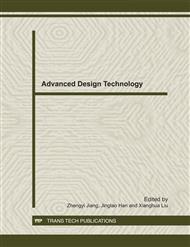p.436
p.440
p.444
p.450
p.457
p.461
p.465
p.470
p.477
Three-Dimensional Design and Motion Simulation of the Three-Ring Gear Reducer
Abstract:
The three-ring gear reducer (TRGR) is a novel type of planetary transmission device with few tooth difference, which has numerous advantages over traditional reducers, such as large transmission ratio, high loading capacity, compact volume etc, and it has been widely used in many fields. This article takes TRGR as research object,using computer software, carries on the structural design and the simulation research to it, simulation results compare with actual data. It has an important significance to the design calculations and structural optimization of the three-ring gear reducer.
Info:
Periodical:
Pages:
457-460
Citation:
Online since:
December 2011
Authors:
Price:
Сopyright:
© 2012 Trans Tech Publications Ltd. All Rights Reserved
Share:
Citation:


